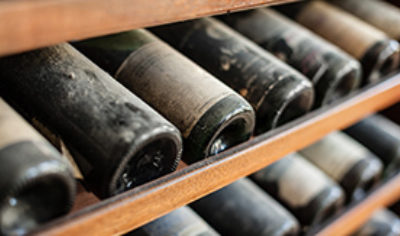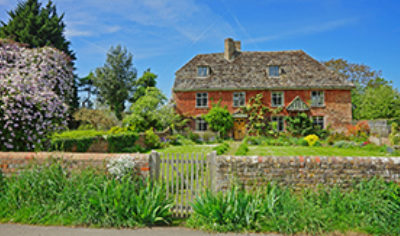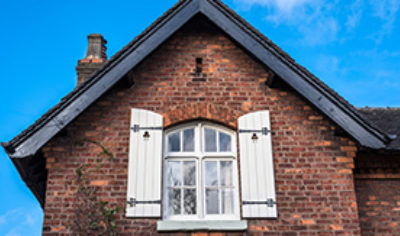UK’s Top 20 Historic Listed Buildings: The Tower of London
The Tower of London is London’s top visitor attraction and is classified as a Grade 1 listed building, it is officially Her Majesty’s Palace and Fortress and no visit to the capital is complete without a visit to this historic place. In it’s 1000 year history it has been a palace a prison, an armoury, a treasure house, a mint and a place of torture and execution, within it’s walls the history of the United Kingdom has unfolded with each subsequent ruler leaving a lasting impression for future generations, in ancient times, anyone arriving by river via the Traitors gate knew that the were unlikely to see the outside world again.
The Tower of London was originally designed as a fortress by William the Conquer and was built at the beginning of the 11th centaury, a symbol of power and strength, designed to strike fear in to the hearts of Williams’ enemies in his newly conquered lands and to help protect him from the local population. The original tower of the complex is known as the White Tower ( originally the great tower) and this was completed in 1080 and was an addition to the simple timber structure that already existed at the site. William was keen to develop in this area as it had been used as a strategic fortress for over a thousand years, in fact remnants of the old roman walls started by the Emporer Claudius can still be found in existence today.
William wanted to construct a building that would easily be identifiable as a landmark and thus he ordered that stone for the construction work to be brought from Caen in his native France. Boats laden with stone would cross the channel, make the trip up the Thames and moor in the pool of London waiting for the master craftsman to request they be brought ashore. The whole project was overseen by Gundulf, the Bishop of Rochester whose building techniques were admired by William and whom he personally chose for the task.
The name of the White tower is derived from the white stone used in it’s construction. As mentioned above, Caen stone or Pierre de Caen, is a light creamy-yellow Jurassic limestone, beloved by the Normans and in fact used in other important London buildings such as Buckingham Palace. It is well known within the construction industry for it’s usage in ecclesiastical buildings such as churches and cathedrals. The White Tower is approximately 27 meters high and 4.5 meters wide. It took almost 20 years for Williams fortress to be completed and when finished the structure rose almost 100 feet in to the air and in places the walls were almost 15 feet thick. It must have been a formidable sight, with it’s wide ditch, and stone walls. Inside a mini town consisted of living quarters, guardrooms, chapels, crypts and of course an impregnable prison.
Restoration, Repair and Preservation – over the centuries, the Tower of London has become interwoven in to the very fabric of Great Britain. parts have been added, modified and improved. William introduced a new design in to his castle; the structure of the building was built in stone so as the Norman invaders could prove to their newly conquered land, their strength both on a political and military basis. As time passed, the building grew in stature mainly as a result of the need to improve the infrastructure as a result of heightened threats of attack from invaders. The traditional design of castles as this time was to build a motte surrounded by a bailey. For readers not familiar with castle terminology, a motte (not to be confused with a moat which is quite different part of a castle), is a large conical mound with a flat top. These structures where often naturally occurring structures such as, hillocks or hilltops. A motte could be made larger by digging around it’s sides and placing the excavated soil at it’s top. The motte was usually crowned with a wooden structure or building which was used for various purposes. This structure was then surrounded by an area known as a bailey which was a larger open space usually elevated but not to the same height as the motte. The bailey was protected by a ditch. Williams ‘brick built tower on top of a motte, took castle construction to a new level. The English had never seen castles built out of stone before and certainly the construction work would have installed a sense within the local population that these new rulers meant business. This new stone structure was an unprecedented size and records show that the bailey that surrounded the tower measured some 1.75 acres, his builders having to modify the designs to incorporate the previous roman structure.
In is difficult to image in today’s modern age of sky scrappers and high rise tower blocks what an imposing site a tower built of stone some twenty seven meters tall would be. Imagine the scene at the time, an area devoid of other impressive structures and mainly consisting of low rise wooden buildings. The tower would have dominated the landscape and would have made a wonderful landmark for anyone arriving by boat. Following the successful building of the White Tower, the Normans instigated the building of these new modern structures at Warwick, Nottingham. York, Lincoln Cambridge and Huntingdon. William died before he could see his structure completed but he had set in motion a building plan that would see the Tower of London be added to and altered over the course of the next 1000 years.
In the 12th century, King Richard the Lion heart enclosed the white tower with a curtain wall which afforded the structure more protection. He also added a moat and filled it with water from the near by Thames. It is interesting to note that the word moat originates from the French word ‘motte’ meaning mound or hill. The French word was translated into the Middle English word ‘moat’.The structure of early moats was unsuccessful and it wasn’t until Henry 3rd in the 13th century constructed a new moat using a technique invented by the Dutch. Henry greatly improved the curtain wall, adding to it’s thickness and strength and constructed many buildings within the confines of the bailey, thus turning a former fortress in to a palatial residence. Whilst Henry can be credited with much of the “royal palace building work” Fortifications at the Tower of London were not finished until 1285 and were undertaken by Edward 1st. Edward built the outer curtain wall enclosing the inner wall thus creating a double concentric defence system. The old moat was filled in and he built a larger new moat around the outside of the new wall.
The Tower of London enjoyed the prestige of being a royal residence until the time of Oliver Cromwell who decided to tear down the royal buildings as they were deemed unnecessary.One of the buildings to survive this period is The Queen’s House it was built around 1530, in a different ‘Tudor’ style and was trimmed with wood; it is also one of the few such constructed buildings to survive the Great Fire of London of 1666 a fact it owes to it’s location with the stone walls of the tower. Although we cannot be sure, it is likely that the building was constructed by Henry the 8th for Anne Boleyn, who alas did not live to long to enjoy much usage of the building.
Intermittent building work was carried out at the tower after the restoration of the monarchy much of it was designed to improve or strengthen the exiting structure. There are two major periods of restoration work at the tower which bring us up to the modern age where the whole of the tower complex has been afforded listed building status thus insuring that it remains as part of our heritage for many years to come and thus preserved for future generations. In the first period of restoration, St Christopher Wren took charge of the remodelling of the White Tower. He altered all of the windows and the original staircase leading up to the main entrance. Wren was also responsible for work carried out to the Horse Armoury.
The second period of renovation which was carried out by the Victorian architect Anthony Salvin in 1851 was designed to restore parts of the Beauchamp tower to have a more medieval appearance. The Victorians were the generation that first muted the idea of opening up the tower as a tourist attraction. Although Salvin was a much accredited architect, his successor John Taylor who took over in 1870 was responsible for work of an inferior quality. With hind sight the works were a complete disaster, what had been a wonderful collection of medieval buildings had been turned in to a side show which would not have been out of place on a Disney set.
Thankfully the Tower of London is now treated with the respect it deserves and much of this appalling work has been reversed. As a Grade 1 listed building is afforded protection as arguably the most important building in the British Isles. However, the Tower does face modern day challenges. As well as the toll on the infrastructure of the thousands of daily tourists who flock to this location, Unesco is on the verge of placing the tower on the danger list. This wonderful castle complex that once stood proud and alone next to the Thames is fast becoming overshadowed by vast glass office blocks that offer little sympathy to this location. The worry is that future visitors to the tower will not be able to view the structure within historical context as the surrounding locations are fast becoming eroded by modern developments as the city expands in all directions. A stand needs to be taken to prevent any alterations being carried out at the Tower and hopefully it will still be standing proud if somewhat overshadowed in a thousand years time
This article was written by Assetsure- a provider of Listed Building Insurance.
























